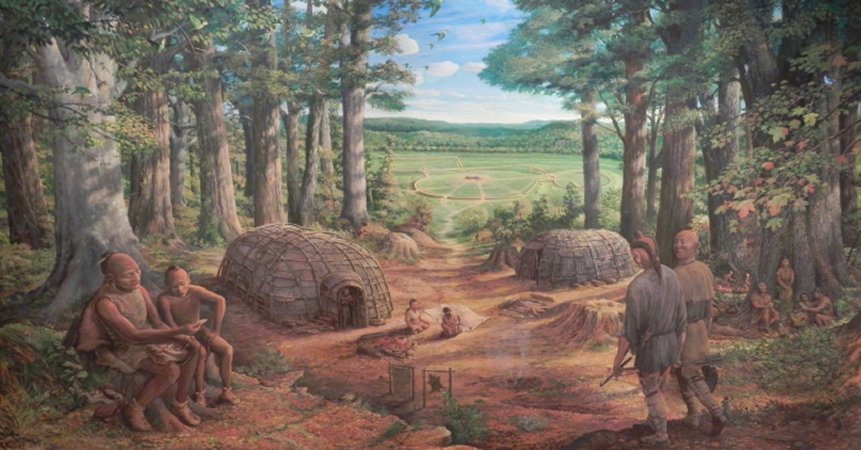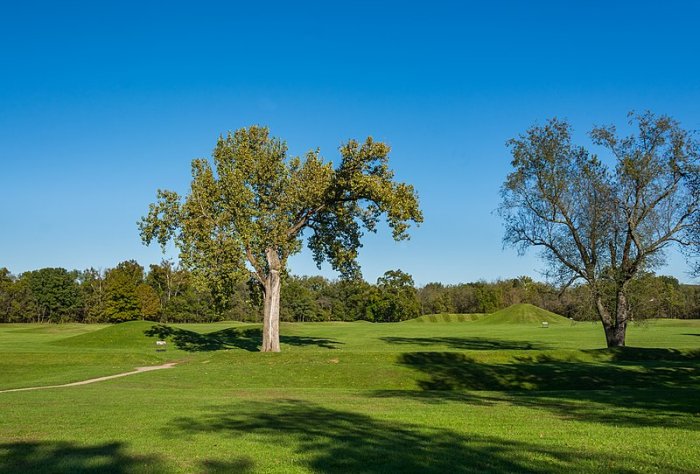Can Aikman Mounds In Arkansas Explain The Hopewell Culture’s Mysterious Disappearance?
Ellen Lloyd - AncientPages.com - Many Native American mounds have been destroyed without study, which means valuable information about our ancestors’ culture has been lost. However, based on the examinations of surviving earthen mounds, it is known that most of these structures were built for ritual or burial purposes.
There are several important ancient mounds in Arkansas and each and one of them offers historical knowledge about the mound builders.
Forest People” painted by Robert Dafford in the Appalachian Forest Museum of the Arc of Appalachia Preserve System. Seip Earthworks is in the background of the painting. Credit: Heartland Earthworks Conservancy
While excavating the Aikman Mounds archaeologists made a very disturbing discovery. They found several thousands of human skeletons that showed evidence of brutal violence. Skulls had been crushed or staved in. Scientists also found plenty of artifacts, including jewelry along with animal bones. This was a site where a massacre had taken place, but who were the victims?
Were The Aikman Mounds Built By The Last Survivors Of The Hopewell Culture?
In 1898, Professor Edwin Walters excavated a site near Forth Smith where he uncovered an ancient mass grave.
“It is estimated that there are between two to three thousand remains of warriors to the acre and by simple arithmetical calculations, the strength of the opposing forces has been deduced,” Professor Walters reported.
“In other words, the 30-acre archaeological zone enclosed the skeletons of about one hundred thousand people, ranking it among the greatest massacre sites ever recorded. By way of comparison, the Civil War battle of Gettysburg, which was fought over a much larger area, claimed 7,058 lives,” Frank Joseph wrote in his book Advanced Civilizations of Prehistoric America: The Lost Kingdoms of the Adena, Hopewell, Mississippians, and Anasazi.
In North America, there were four known mound-building cultures - the Poverty Point, Adena, Hopewell, and Mississippian culture. Their names, usually taken from the place where relics of their societies were found, refer to a way of life.
It has not been established where the Hopewell culture originated, but these people flourished in the northeastern and midwestern United States from 100 B.C to 500 C.E. They received their name from Captain Mordecai Hopewell, who owned the farm where part of an extensive earthwork site was excavated in 1891.
The Hopewell built several earthen mounds, traded, and produced some of the finest craftwork and artwork of the Americas.
The Hopewell cremated or buried their dead, were interested in astronomy and their moon worshipping priests used some of the mounds to hold ceremonies.
Restored mounds in the Hopewell Culture National Historical Park. Credit: Wikipedia, CC BY-SA 4.0
Despite not being a warrior-like race, the Hopewell couldn’t survive, and they vanished around the turn of the fifth century. The cause of their disappearance is still unknown. Scientists say climate change, drought, warfare, and epidemics ended the Hopewell culture.
According to Frank Joseph, “before the end, many Hopewell fled south to an area between Fort Smith and Hot Springs, Arkansas, where they made a final effort to save themselves at the Aikman Mounds, the last such earthworks ever raised.”
If Joseph’s theory is correct, then the thousands of skeletons discovered at the site could belong to the long-lost Hopewell culture. However, this is only a theory and conclusive evidence is missing. If these human bones are not the remains of the Hopewell, then who were the people brutally killed at the Aikman Mounds?
Written by Ellen Lloyd – AncientPages.com
Copyright © AncientPages.com All rights reserved. This material may not be published, broadcast, rewritten or redistributed in whole or part without the express written permission of AncientPages.com
Expand for referencesMore From Ancient Pages
-
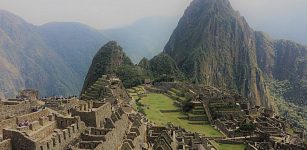 Two Inca Measurement Systems Calculated By Polish Architect
Archaeology | Nov 4, 2020
Two Inca Measurement Systems Calculated By Polish Architect
Archaeology | Nov 4, 2020 -
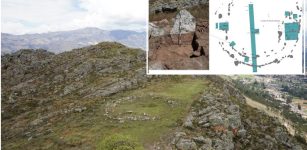 Callacpuma’s Megalithic Stone Circular Plaza Was Constructed Using A Technique Previously Unseen In The Andes
Archaeology | Feb 15, 2024
Callacpuma’s Megalithic Stone Circular Plaza Was Constructed Using A Technique Previously Unseen In The Andes
Archaeology | Feb 15, 2024 -
 First Discovery Of 60,000-Year-Old Quina Technology In East Asia Challenges Understanding Of Ancient Human Evolution
Archaeology | Apr 7, 2025
First Discovery Of 60,000-Year-Old Quina Technology In East Asia Challenges Understanding Of Ancient Human Evolution
Archaeology | Apr 7, 2025 -
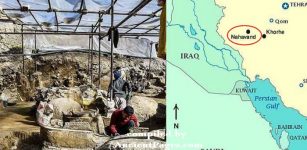 More Evidence Linked To Enigmatic Laodicea Temple In Nahavand Found By Iranian Archaeologists
Archaeology | Aug 7, 2020
More Evidence Linked To Enigmatic Laodicea Temple In Nahavand Found By Iranian Archaeologists
Archaeology | Aug 7, 2020 -
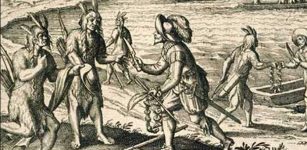 Indigenous People In Oconee Valley Remained In Southeastern US For Nearly 150 Years
Archaeology | Jul 15, 2020
Indigenous People In Oconee Valley Remained In Southeastern US For Nearly 150 Years
Archaeology | Jul 15, 2020 -
 On This Day In History: Roman Emperor Caligula Was Born – On August 31, 12 AD
News | Aug 31, 2016
On This Day In History: Roman Emperor Caligula Was Born – On August 31, 12 AD
News | Aug 31, 2016 -
 Siberia Had A Major Skull Surgery Center 2,500 Years Ago
Ancient History Facts | Jul 19, 2019
Siberia Had A Major Skull Surgery Center 2,500 Years Ago
Ancient History Facts | Jul 19, 2019 -
 King Mithradates VI Of Pontus Used Poison To Avoid Death By Poison
Ancient History Facts | Mar 5, 2016
King Mithradates VI Of Pontus Used Poison To Avoid Death By Poison
Ancient History Facts | Mar 5, 2016 -
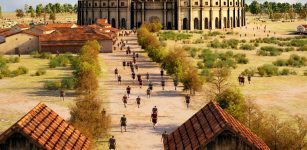 New Discoveries Regarding Gladiatorial Games In Roman City Of Carnuntum
Archaeology | Apr 7, 2017
New Discoveries Regarding Gladiatorial Games In Roman City Of Carnuntum
Archaeology | Apr 7, 2017 -
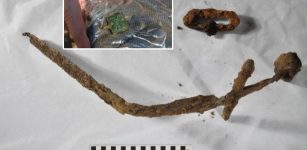 Crusader-Era Sword Discovered At Previously Unknown Burial Site In Finland
Archaeology | Oct 16, 2023
Crusader-Era Sword Discovered At Previously Unknown Burial Site In Finland
Archaeology | Oct 16, 2023 -
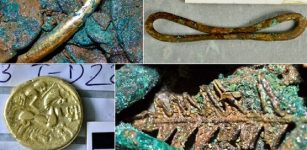 Remarkable Le Catillon II Hoard – World’s Largest Collection Of Celtic Coins And Jewellery
Archaeology | Nov 24, 2015
Remarkable Le Catillon II Hoard – World’s Largest Collection Of Celtic Coins And Jewellery
Archaeology | Nov 24, 2015 -
 On This Day In History: Gold Discovery In The Yukon – On August 16, 1896
News | Aug 16, 2016
On This Day In History: Gold Discovery In The Yukon – On August 16, 1896
News | Aug 16, 2016 -
 How Did A Major Cooling Event 8,200 Years Ago Affect Hunter-Gatherers?
Archaeology | Jan 28, 2022
How Did A Major Cooling Event 8,200 Years Ago Affect Hunter-Gatherers?
Archaeology | Jan 28, 2022 -
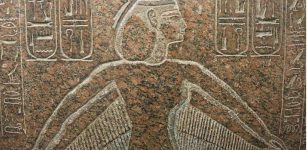 Nephthys – Egyptian Funerary Goddess Who Also Protected The Pharaohs While They Were Alive
Featured Stories | Aug 15, 2021
Nephthys – Egyptian Funerary Goddess Who Also Protected The Pharaohs While They Were Alive
Featured Stories | Aug 15, 2021 -
 Silver And Bronze Coins Discovered In Ancient Roman Fort Apsaros, Georgia
Archaeology | Jul 23, 2018
Silver And Bronze Coins Discovered In Ancient Roman Fort Apsaros, Georgia
Archaeology | Jul 23, 2018 -
 New Evidence: Earliest Known Battle Fought By Julius Caesar On Dutch Soil
Archaeology | Dec 17, 2015
New Evidence: Earliest Known Battle Fought By Julius Caesar On Dutch Soil
Archaeology | Dec 17, 2015 -
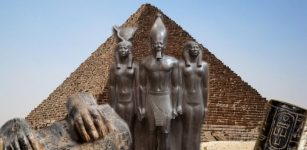 Pharaoh Menkaure – Egyptian Ruler Who Tried To Outsmart Fate
Featured Stories | Nov 18, 2020
Pharaoh Menkaure – Egyptian Ruler Who Tried To Outsmart Fate
Featured Stories | Nov 18, 2020 -
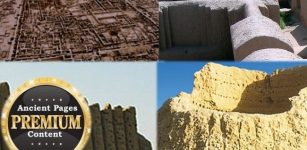 Strange Ancient Labyrinth City Under The Sands Of The Kara Kum Desert Reveals Its Secrets
Ancient Mysteries | Sep 29, 2014
Strange Ancient Labyrinth City Under The Sands Of The Kara Kum Desert Reveals Its Secrets
Ancient Mysteries | Sep 29, 2014 -
 Forbidden Knowledge: Secret Ancient Gates Of The Shining Ones – More Surprising Discoveries – Part 3
Ancient Mysteries | Jul 19, 2019
Forbidden Knowledge: Secret Ancient Gates Of The Shining Ones – More Surprising Discoveries – Part 3
Ancient Mysteries | Jul 19, 2019 -
 Ancient People Handled Sun Exposure Better Than Modern People – An Anthropologist Explains Why
Featured Stories | Sep 21, 2022
Ancient People Handled Sun Exposure Better Than Modern People – An Anthropologist Explains Why
Featured Stories | Sep 21, 2022

